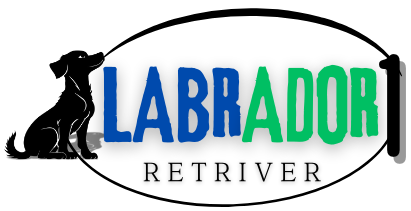How to Choose the Right Chocolate Lab Puppy for Your Family
Picture this: a joyful chocolate Lab puppy sprinting across your backyard, tail wagging, eyes gleaming with curiosity, and a goofy grin plastered across its face. There’s a unique kind of magic in bringing a Labrador into your home. Their boundless affection and loyalty are unmatched—but so are their needs.
You’re not just picking a pet; you’re choosing a family member. And that’s why making the right decision matters. The chocolate Labrador is lovable, energetic, and eager to be by your side—but is one right for you?
This guide is designed to walk you through every step so you can confidently choose a chocolate Lab puppy that suits your lifestyle, energy level, and home. From understanding the breed to asking the right questions and avoiding common pitfalls, you’re about to learn how to make one of the most rewarding decisions of your life.
Table of Contents
Understanding the Chocolate Labrador Retriever Breed
What Sets Chocolate Labs Apart
You’ve likely seen a Lab or two at the park—big, bouncy, and impossible to ignore. Chocolate Labs, specifically, stand out for their rich brown coats and warm, expressive eyes. They’re just as intelligent and trainable as their yellow and black counterparts, but chocolate Labs often form an especially tight bond with their families.
They were originally bred for retrieving game, so don’t be surprised by their need for activity and purpose. If you’re looking for a dog that will stick by you through thick and thin (and probably steal your socks in the process), this is it.
Typical Personality Traits
- Affectionate and loyal
- Energetic and playful
- Intelligent and eager to please
- Friendly with children and other pets
- Occasionally mischievous when bored or under-stimulated
Quick Facts to Know
- Life expectancy: 10–12 years
- Weight range: 55–80 pounds
- Height at shoulder: 21.5″–24.5″
- Coat: Short, water-resistant, and dense
- Temperament: Kind, outgoing, high-spirited
Labs thrive in homes that can offer structure, playtime, and companionship. If you’re rarely home or prefer a laid-back lifestyle, this may not be the ideal breed for you.
Assessing Your Family’s Lifestyle and Needs

Is a Chocolate Lab the Right Fit for You?
Every family is different. So before you fall for a pair of chocolate brown eyes, take a step back and consider your lifestyle.
Ask yourself:
- Do you have a spacious living environment or a backyard?
- Are you ready for daily exercise routines?
- Will someone be home often enough to avoid long periods of loneliness?
- Can you afford the ongoing cost of veterinary care, food, and grooming?
- Are your children old enough to handle a high-energy dog?
If most of your answers lean toward “yes,” you’re on the right track.
Matching a Lab with Your Household Age and Energy
| Age of Family Members | Chocolate Lab Compatibility | Notes |
|---|---|---|
| Toddlers (0–3) | Moderate | Labs may unintentionally knock them over |
| Kids (4–12) | High | Great playmates and fast friends |
| Teenagers & Adults | High | Perfect for active households |
| Seniors | Low to Moderate | Only if you’re active and mobile |
Chocolate Labs are not couch potatoes. They need stimulation, both mental and physical. If you’re looking for a more relaxed companion, another breed might be a better match.
Where to Find a Chocolate Lab Puppy
Responsible Breeders: Your Best Bet
Working with a reputable breeder helps ensure that your puppy is healthy and properly socialized. Here’s what to look for:
- Health testing for hips, elbows, and eyes
- Early socialization with humans and other dogs
- Clean living conditions
- Willingness to answer questions and provide documentation
- References or reviews from other families
Never hesitate to visit the breeder in person. A trustworthy breeder will encourage it.
Other Puppy Sources (Proceed with Caution)
- Rescue or Adoption Centers: A great choice if you’re open to slightly older puppies or dogs with unknown lineage. They often have training and vaccinations already done.
- Pet Stores and Backyard Breeders: These options often prioritize profit over puppy health. Avoid unless you’ve done extensive research and vetting.
Top Questions to Ask a Breeder
- Can I meet the puppy’s parents?
- Have the puppies been vet-checked?
- Are they up to date on vaccines and deworming?
- What kind of socialization have they had?
- Can I get copies of health test results?
How to Evaluate a Chocolate Lab Puppy’s Health and Temperament

Temperament Traits to Look For
You want a puppy that’s curious, confident, and social—not one that hides in a corner or bites out of fear.
Here’s what to look for:
- Comfortable being held and touched
- Engages with toys or people
- Not overly dominant with littermates
- Recovers quickly from surprises (e.g., loud noises)
Physical Health Checklist
Before you fall in love, check for:
- Bright, clear eyes
- Clean ears with no strong odor
- Shiny, soft coat
- No signs of limping or uneven gait
- Energetic but not frantic
If possible, bring a vet with you—or schedule a health screening before finalizing the adoption.
Getting Ready for Your New Family Member
Home Preparation Tips
Before your puppy arrives, your home should be ready. Think baby-proofing—but for dogs.
- Secure cords and small objects
- Create a cozy sleeping area or crate
- Stock up on chew toys, food, bowls, and grooming tools
- Install baby gates for off-limits areas
Consistency is key. Set routines early so your puppy knows what to expect.
Feeding Your Chocolate Lab Puppy Right
Labs love food—almost too much. So it’s vital to give them balanced, breed-appropriate nutrition.
| Puppy Age | Feeding Schedule | Ideal Food Type |
|---|---|---|
| 8–12 weeks | 4x/day | High-calorie puppy kibble |
| 3–6 months | 3x/day | Protein-rich puppy formula |
| 6–12 months | 2x/day | Large-breed puppy food |
Tip: Look for labels that include DHA (for brain development), calcium/phosphorus balance, and whole proteins as the first ingredient.
Avoid overfeeding—obesity is a common issue in Labs and can lead to joint problems later in life.
Training and Socialization: Establishing the Groundwork
Socialization Starts Early
The first 16 weeks are crucial. Give your dog exposure to a variety of
- People (children, seniors, people in hats/uniforms)
- Sounds (vacuums, cars, thunder)
- Environments (parks, sidewalks, vet clinics)
Reward calm curiosity and gently redirect fear.
Essential Commands to Teach
- Sit
- Stay
- Come
- Leave it
- Heel
Keep training sessions short (5–10 minutes), positive, and consistent. Labs respond best to praise and rewards.
Common Mistakes to Avoid When Choosing a Chocolate Lab Puppy

It is easy to make mistakes, even when you mean well.
Avoid:
- Picking based on looks alone: The cutest pup might not be the best fit.
- Skipping breeder research: Always verify credentials and health screenings.
- Overlooking your own lifestyle limitations: A Lab needs more than love—it needs time and energy.
- Expecting instant perfection: Puppies take time, patience, and consistent guidance.
Conclusion: A Chocolate Lab Puppy Is a Life-Changing Companion
Choosing the right chocolate Lab puppy isn’t just a process—it’s a journey. You’re selecting a companion who will grow alongside your family, share in your happiest moments, and offer comfort in your hardest times.
If you’re ready to commit the time, energy, and love this incredible breed needs, you’re in for a world of tail wags, silly grins, and unforgettable memories. Your new best friend is out there—now you just need to go find them.
Frequently Asked Questions About Chocolate Lab Puppies
What should I look for in a healthy chocolate Lab puppy?
Look for bright eyes, clean ears, smooth movement, and a playful personality. Avoid puppies that seem overly fearful or lethargic.
Are chocolate Labs good for first-time dog owners?
Absolutely—if you’re prepared for their energy and training needs. They are comparatively easy to train because of their desire to please.
How much should a chocolate Lab puppy cost?
You can expect to pay anywhere from $800 to $2,000 depending on the breeder, health testing, and pedigree. Rescue adoption fees are typically lower.
Do chocolate Labs shed a lot?
Yes, they shed moderately year-round and heavily during seasonal changes. Brushing on a regular basis keeps it under control.
How much exercise does a chocolate Lab need?
daily mental and physical stimulation for at least 60 to 90 minutes. Without it, they may grow disinterested and destructive.
Ready to Welcome a Chocolate Lab into Your Life?
Choosing a puppy is more than just a purchase—it’s a promise. Now that you’re equipped with the knowledge, it’s time to take the next step.
✅ Research responsible breeders or rescues
✅ Visit and observe puppies in person
✅ Prepare your home and heart for a new family member







